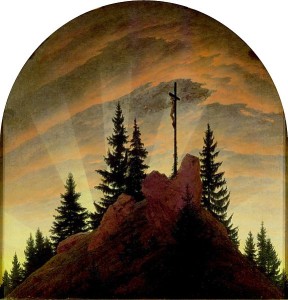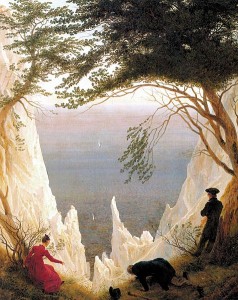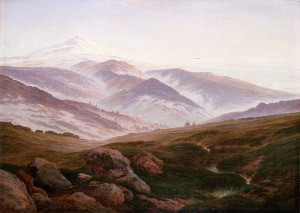Caspar David Friedrich’s Wanderer above the Sea of Fog is delightfully mysterious in its depiction of a man gazing out into the oblivion of a fog-shrouded landscape. A historian named John Gaddis described it as “suggesting at once mastery over a landscape and the insignificance of the individual within it. We see no face, so it’s impossible to know whether the prospect facing the young man is exhilarating, or terrifying, or both.”^1 It illustrates the unknown future laid out before each person and invites them to reflect on its nature, to think how they view the uncertainty before them–with excitement, or with dread?
This painting is typical of Friedrich’s work. He is known for his paintings of people dwarfed by the scale of a landscape spread out before them, forced to contemplate a deeper meaning. He sought to evoke emotion, and his work was intended to be allegorical so that the landscape could signify life and its choices and uncertainty. It was frequently laced with suggested themes of loneliness, tragedy, and death; but of course, the very nature of his work is mystery, leaving space for interpretation.
Friedrich was born in Germany on September 5, 1774. He was considered to be the most important German artist of his time.
Below are featured Cross in the Mountains, Chalk Cliffs on Rugen, and Memories of the Giant Mountains.
^1 Gaddis, John (2002), The Landscape of History: How Historians Map the Past, Oxford Oxfordshire: Oxford University Press, ISBN 0-19-506652-9




I love this guy. I love landscapes and with the small insignificant people within the paintings just makes the landscape more magnificent.